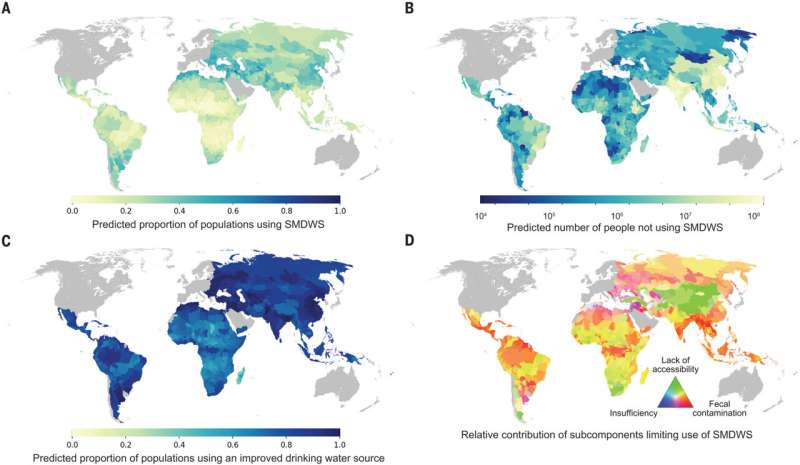August 16, 2024 report
Computer simulations suggest more than half of people on Earth have limited access to safe drinking water

A multi-institutional team of environmental scientists has built a computer simulation showing that more than half of all people globally have limited access to safe drinking water. The findings are in the journal Science.
Rob Hope, with the University of Oxford, has published a in the same journal issue describing the conditions that must be met for an area or region to be classified as having safe drinking water and outlining the work done by the team on this new effort.
In 2020, organizations around the world estimated that approximately 2 billion people globally lacked access to safe drinking water. In this new study, the researchers found evidence that the actual number is more than double that.
As Hope notes, access to safe drinking water means people have access to safe water on demand, whenever they need it. Safe water access also means that water is on the premises鈥攑eople should not have to travel to find it. And the water they drink must be free of containments such as bacteria or harmful chemicals.
The researchers built their simulation using both environmental and survey data for almost 65,000 households around the world. The team used the simulation to generate maps for 135 countries showing where people had access to safe drinking water.
They then compared the maps with data from UNICEF to calculate an estimate for the total number of people around the world who do not have access to safe drinking water. They found it to be 4.4 billion鈥攎ore than half of the current global population of 8 billion.
As expected, the research team found that most of those without access to safe drinking water lived in South Asia, sub-Saharan Africa and East Asia. They also found that the biggest hindrances to safe drinking water were the presence of contaminants and lack of infrastructure. As one example, they note that approximately 650 million people in parts of Africa live in places where there are no water delivery services.
More information: Esther E. Greenwood et al, Mapping safe drinking water use in low- and middle-income countries, Science (2024).
Rob Hope, Four billion people lack safe water, Science (2024).
Journal information: Science
漏 2024 Science X Network


















